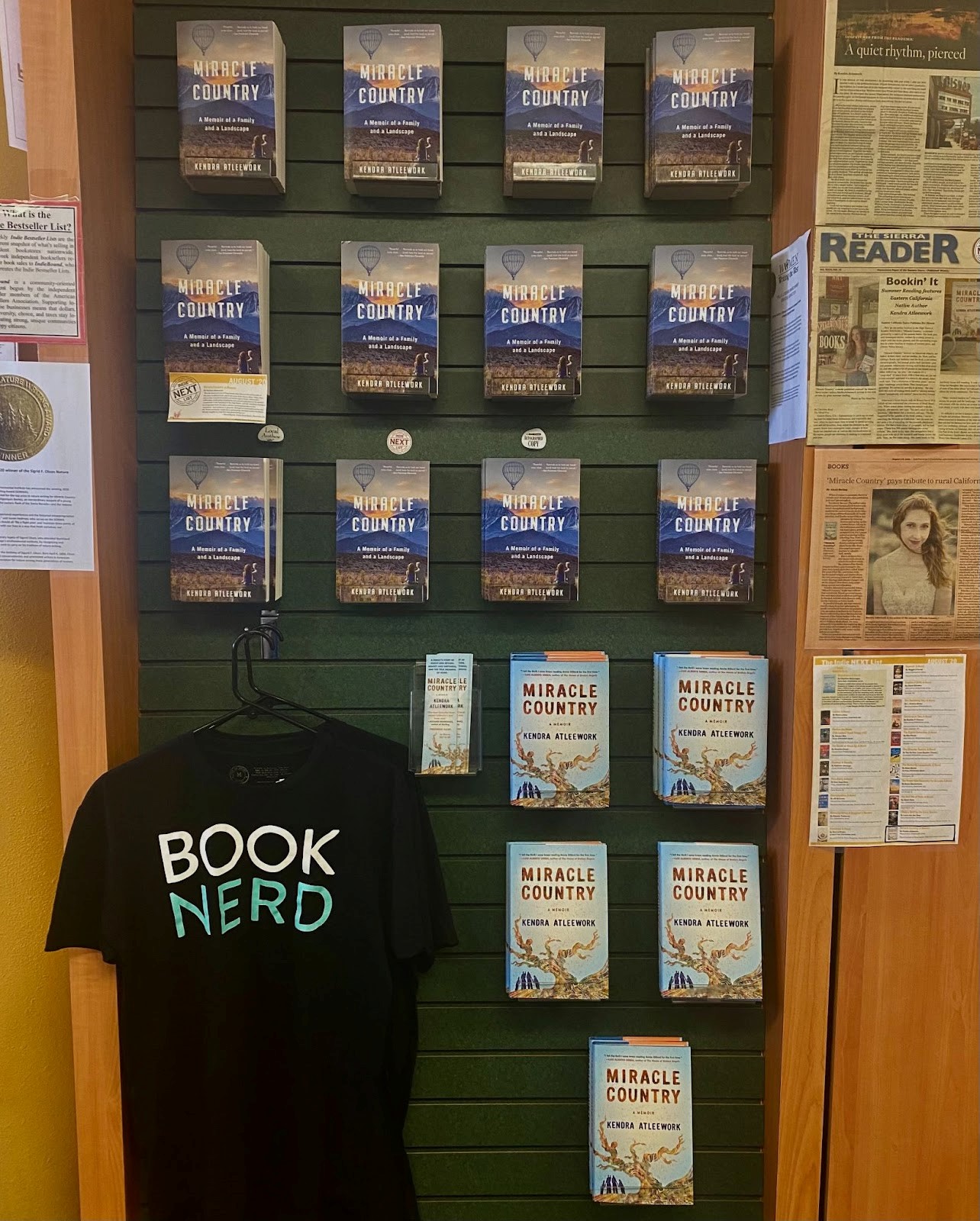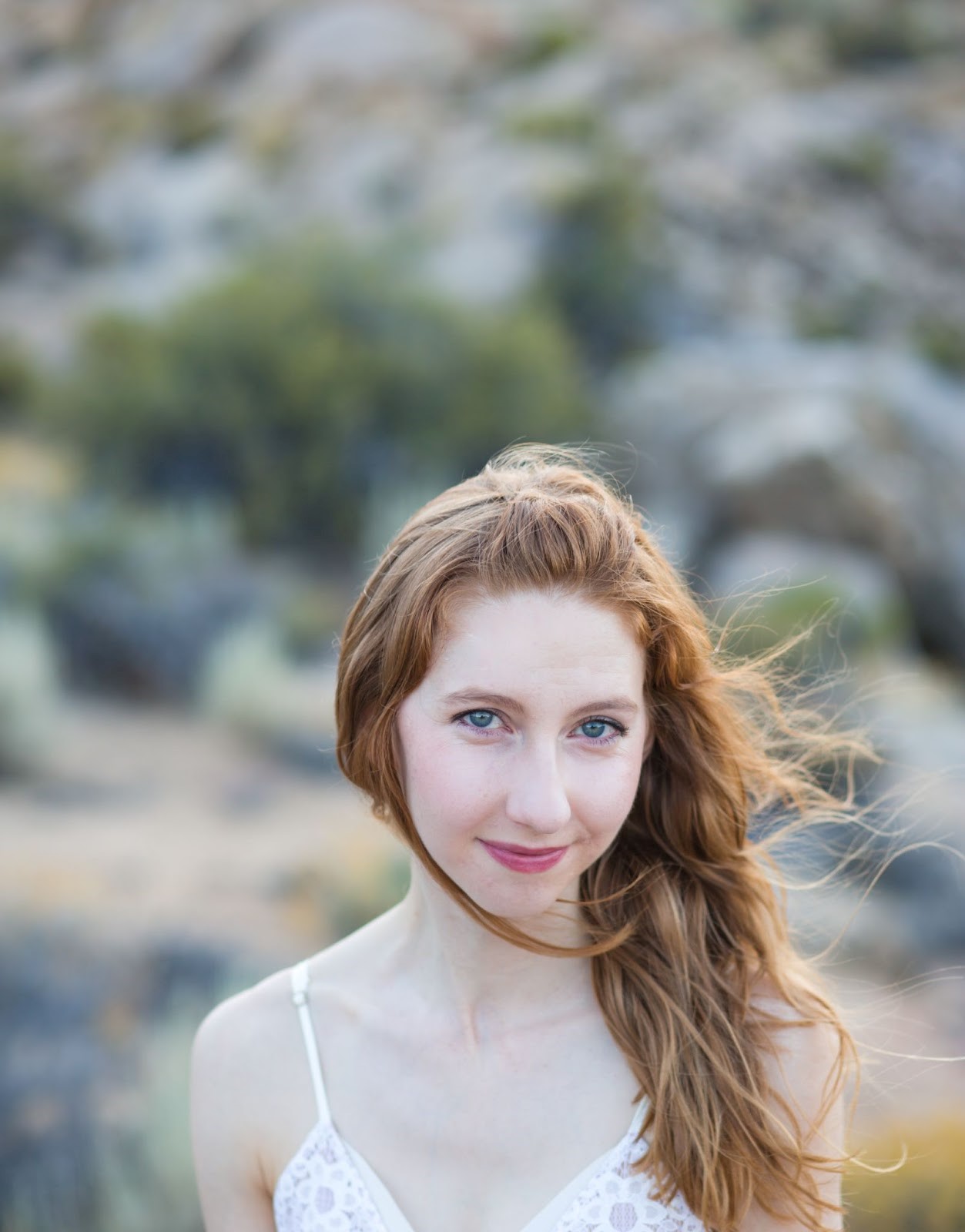Volume 2 - Issue 2
Mid-February 2022 | |
Miracle Country By Jamie Della Many people in the Eastern Sierra are raving about the book, Miracle Country, because it’s a love letter to our home. Author Kendra Atleework grew up in the community of Swall Meadows, in the foothills of the Sierra Nevada range, thirty miles north of Bishop, and has penned a book that viscerally expresses the love for what many Angelenos call “their spiritual home.” Although both the people of Los Angeles and the Eastern Sierra each share a deep appreciation for the wild beauty of the Sierra Nevada, the difference between our two communities lies in the fact that only one knows how deeply we are connected. The majority of those who call the Eastern Sierra home understand that much of the local water rushes south, out of our aquifers, dried-up streams, and the now desiccated Owens Lake that kicks up arsenic in high winds; whereas most Angelenos have no idea where the water that comes through their kitchen faucet originates. “Most people who grow up in the Eastern Sierra feel a vague resentment toward Los Angeles – even though we are economically dependent upon tourism from southern California,” says Atleework. We sat together in Pupfish Café, named after the endangered small fish that cavorts in certain waterways of the Owens Valley, to discuss Miracle Country, winner of the Sigurd F. Olson Nature Writing Award, the 2021 Women Writing the West WILLA Literary Award in Creative Nonfiction, and 2021 pick for Nevada’s statewide book club, Nevada Reads. Having received impressive reviews from authoritative publications such as the San Francisco Chronicle, as well as renowned authors like Richard Rodriguez, this memoir of a family and a landscape is more than a “local girl done good.” Atleework’s book is a quest to better understand how the history of the Owens Valley has shaped our community, as it bears witness to the relationship between people, the land, and the water. | |  | Local Bishop bookstore, Spellbinder Books, has featured a prominent Miracle Country wall ever since the book came out in 2020, displaying newspaper clippings, reviews, and notes on the accolades the book has received. ____________________ In the following passage we are witness to an idyllic childhood on a lazy river and the teen angst that tries to make sense of the diffused frustration at the loss of what is both a literal and symbolic resource: On the outskirts of Bishop, the Owens River swells with spring snowmelt, and tall grasses grow around its banks. Here, the air has the clean smell of mud and the rotten smell of reeds mulching in the shallows. Cattle wade, and cottonwoods sink their roots. Years before, my parents loaded inner tubes and the five of us jumped eight feet off the bridge on Warm Springs Road. We floated south as the rubber smudged our skin, passing deflated tubes that lolled in low branches. Pop called us back when we drifted too close to the snarl at the river’s edge. “Stay out of the willows! Don’t get popped!” We broke cattails apart, and the fluffy seeds stuck to our skin like fur. Floating on our backs, we glimpsed miles of brush beyond the banks. All the time we could see mountains to the east and west, standing guard. The river turns and doubles back as if it will never end, but it does end, and we know it. Elizabeth parks the car at the water’s edge, leaving the doors open so we can still hear music. And we jump in and float in darkness. Our campfire spreads gold scrap over the water. The cold of the river unclenches the knots in our feet, wind stirs the cottonwoods, and between the leaves we see stars. Here, we drift until after midnight. And here, we make a point to pee in the river. “Take that LA,” Elizabeth says. “How do you like our water now?” Make no mistake, this book is not a polemic attempt at fueling the tunnel-vision divisiveness between the two communities.. Atleework pulled no punches in her desire to better understand the past and present as they played out upon her life in the Owens Valley. With unflinching determination to avoid the cycle of a clear villain and sanctimonious victims, and to deeply consider the inheritance of collective anger, Atleework dove into researching William Mulholland, who engineered the Los Angeles Aqueduct. She also read his biography, written by his granddaughter. | | |  | Miracle Country Author Kendra Atleework ____________________ Mulholland strove for what he called “the greatest good for the greatest number”- yet, the idea of good is subjective enough, and the numbers of which Mulholland spoke of were primarily white, privileged folks such as himself. “Instead of only indicting Mulholland, I tried to seek the nuance and complexity of his story,” says Atleework. “Mulholland was a product of his culture; thus he was a man who failed to approach the land with the understanding and sense of reciprocity of the First People. His culture failed to learn from the Nuumu and instead attempted to violently remove them. But even while we try to understand how men like Mulholland shaped and viewed the world, we can't let them off the hook. There were others in the early 1900s, like the author Mary Hunter Austin, who did listen to the Indigenous folks in the valley, and who tried to understand the landscape she called home. I also think it's important to turn the same critical lens we apply to history onto ourselves." Austin began her writing career in 1900 with the publication of essays about the Owens Valley. Her first book, The Land of Little Rain, published in 1903, is still in print and considered classic literature that depicts the beauty of the Owens Valley. Austin writes, “Man is not himself only...He is all that he sees; all that flows to him from a thousand sources...He is the land, the lift of its mountain lines, the reach of its valleys.” Water Equality The first white men who settled in the Owens Valley worked in trades such as ranching, mining or sheepherding. Under the authority of Manifest Destiny, they were nearly obligated by the American government to push out indigenous peoples and subsequently took over the existing aqueducts for their own purposes. Atleework writes, “The ranchers saw beauty in Payahuunadu, but they were of a culture that often forgot what to do with beauty. They believed themselves ordained to make the land yield all they needed and more, the greatest good for the greatest number.” Today, we grapple with a new understanding of the greatest good, understanding that the greatest number must include indigenous peoples, rural livelihoods, and the plants, animals, and lands that make the greatest good possible. “Do better” is the refrain ringing out from every corner of the globe based on how often the hashtag is used on social media and in articles, both online and in print. One way to do better is to recognize that we are more than our animalistic nature driven to climb to the top. We don’t have to blindly accept that the spoils go to the victors, but instill values of equality and mutuality with nature. We are made a community with land, flora, fauna, and each other, because we all share the same water. The stories, historical records, and perspective found in Miracle Country can motivate us to "do better" by encouraging us to dive deeper into the history of the land we live on and how its resources - ecological, economic, and cultural - are all connected. When we work together, we can and will discover solutions for a more sustainable future. How can you help? Share this newsletter. Educate yourself on the origins of your water source. Advocate for water equality. Join us in the fight to #keeplongvalleygreen by staying up to date on events, action items, and developments via our Instagram (@keeplongvalleygreen), our Twitter (@LongValleyGreen), our Facebook (@keeplongvalleygreen), and this newsletter! | |  | | |